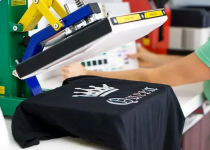The Ultimate Guide To Choosing The Right Power Strip For Your Home Or Office
Home and office appliances require a sustainable electrical power supply to ensure smooth functioning. Power strips help supply electricity to multiple devices and those positioned far from the outlets. You will need an extension cord for your device. However, you must ensure it is compatible with your equipment to avoid disasters.

This article explains the various methods to buy a suitable extension cord for your fridge, audio player, television, or computer. The many choices in the market make it necessary to conduct research and ascertain the best option.
Read on to learn what comprises a good power strip and how to select one for your appliances.
1. The Number of Outlets
https://pixabay.com/photos/plug-power-outlet-power-strip-3285062/
Your office has a single wall socket, but you must connect a few devices. You have a desktop computer with two monitors, a printer, a Bluetooth speaker, and a coffee machine. The minimum you need is six outlets for efficiency. Even then, you will disconnect one appliance to charge your phone, portable battery, or laptop.
Sharing an office with others means you will have more gadgets connected to the same extension cord. Homes also need many outlets for the devices and appliances in the living room, bedroom, study, and kitchen. Gamers sharing a screen will need a 12 outlet power strip. That enables four people to connect their consoles, speakers, and controllers.
Another reason you need more outlets is to prevent daisy chaining. It is a risky practice – connecting one power strip to another. It increases the chances of electrical overload. Also, loose contacts may cause sparks and fire outbreaks.
2. Extension Cord Length
How far is your laptop positioned from the wall socket? Are you working outdoors where there are no power outlets? You will need an extension cord that spans the distance between your device and the wall socket.
A short wire will disappoint you because it cannot get the electricity where you need it. You would need to connect another extension cord to make that possible, but that can be disastrous.
Measure the distance, add a few extra feet, and buy a power strip that fits the length. A 25-foot cord will work for most home and office appliances. Check the extension cord flexibility to ensure you have the best connection without tangles. However, avoid making it too long. That can drop the voltage and affect performance.
3. Wire Gauge
https://pixabay.com/photos/wires-connection-to-combine-1080555/
The AWG (electrical wire thickness rating) determines how much power can flow through the cable without overloading. Lower numbers mean the power cord uses a thicker wire. For instance, a 12 AWG is thinner than a 10 AWG.
The gauge should match the power requirements of your appliances to avoid overheating, voltage drops, fire outbreaks, and electrical shocks.
But how do you determine the best one for your needs? Identify the appliances you want to power on concurrently and add the amperage. Office computers use three amps, and one monitor requires less than 0.5 amps.
Use the AWG table to determine the best wire size for them. For instance, the 10 AWG can handle 30 amps, but the 12 AWG is suitable for 20 amps.
4. Safety Features
Your home and office are invaluable, and you never want to cause damage to property, electronics, family members, or coworkers. Find a power strip with the best protection against electrical surges, power overloads, and short-circuiting.
Look for safety features, including approval marks, fuse protection, and indicators. The IEC (International Electro-technical Commission) and ETL certification show that the extension cord is safe to use. Fuse protection prevents the power strip from overheating. The indicators light up when there is an overload.
Also, consider physical protection rubber covers and circuit breakers. Those prevent unintentional contact with the electrical current, sparks, or shock. A circuit breaker shuts down an electric appliance when it overloads and prevents damage.
5. Application Suitability
https://pixabay.com/photos/connection-plug-socket-cables-4821773/
Do you need an extension cord for your garage, workshop, or outdoor events? Your office or home power lead can be indoor-use only. Outdoor power strips require waterproof, temperature-resistant, and UV-protected cables. Check that in the description or manual. Never use a regular power strip outdoors because it can cause accidents.
Outdoor power cords also use heavier jackets to prevent wearing out. The reflective covering is visible in a dimly lit room or outdoors. That makes it useful for night events. It will prevent someone from tripping over and hurting themselves. But more precautions are mandatory – like using an overhead cable wire.
Summing Up
Your electronics depend on power strips to share an electric supply for optimal performance. Your choices determine your success or failure. For instance, forgetting the power rating will result in an underrated extension cord.
That can cause overheating, voltage drops, fire outbreaks, and electrical shocks. Consider the length, wire gauge, safety features, and application suitability. Protective features, like surge protection, fusing, and circuit breakers, protect you and your property.


